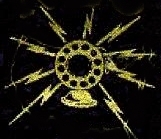|
Plans for Pixieland were unveiled in 1967 by Jerry Parks, the then current owner of Pixie Kitchen. He described it as a 57-acre "Fairytale Story of Oregon." In this first rendering we see a frontier village, "industrial exhibit buildings," canals, a children's zoo, canoe docks, a treehouse, an "Indian village," riverboat, lighthouse, merry-go-round, Ferris wheel and "log flume thrill ride."
Cost of the theme park was estimated at two million dollars and Parks hired two former Disneyland employees, the director of music and director of special promotions, to help design, build and operate the park. Parks bought a parcel of land along Highway 18, near Otis, Oregon about three miles north of Lincoln City. Construction began later that year.
|





